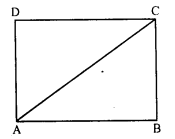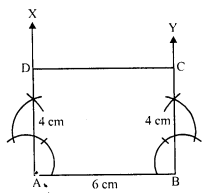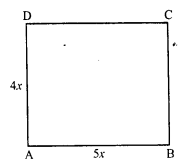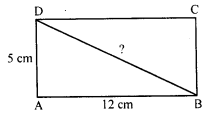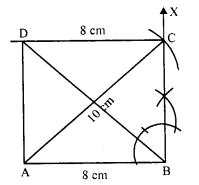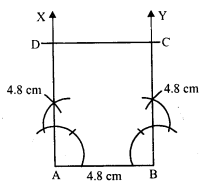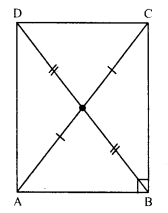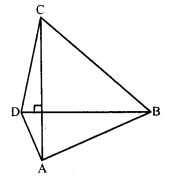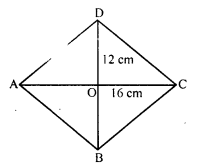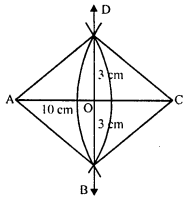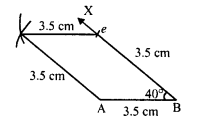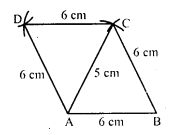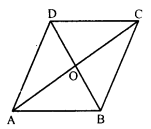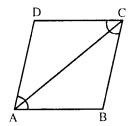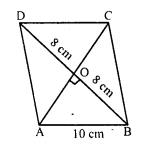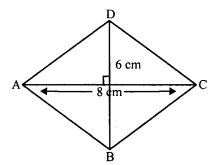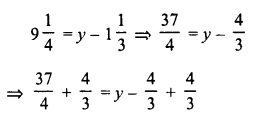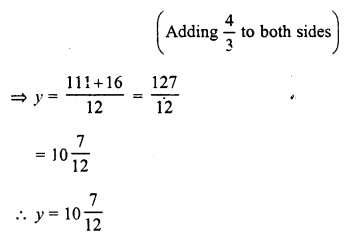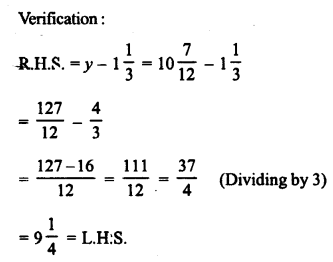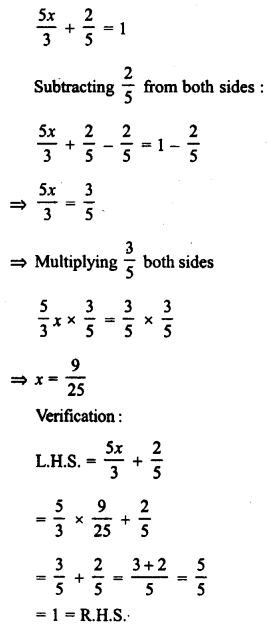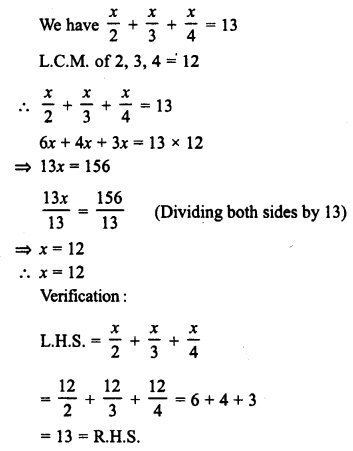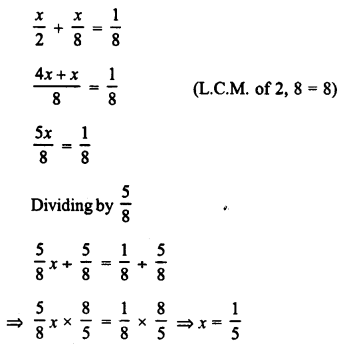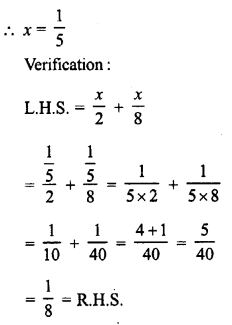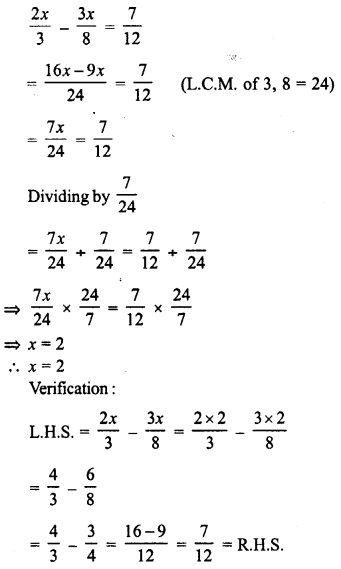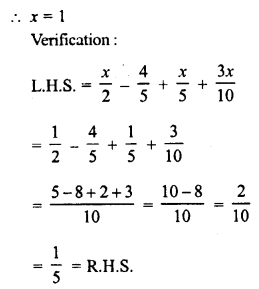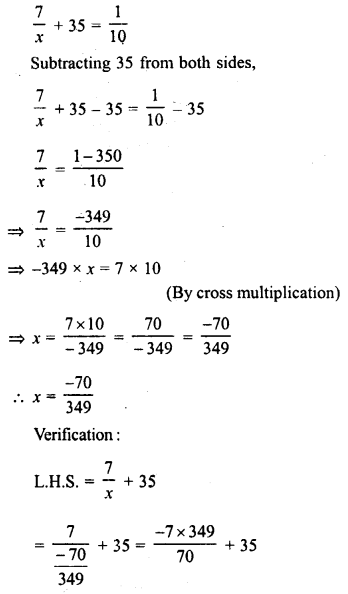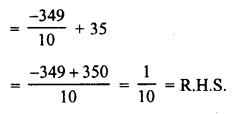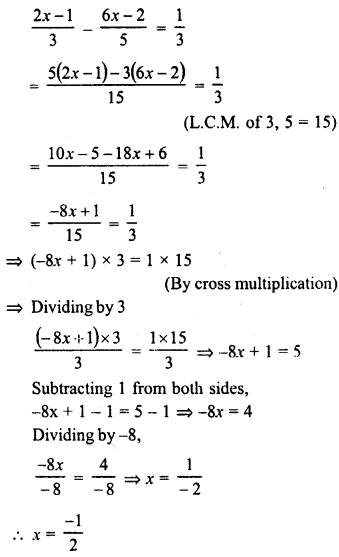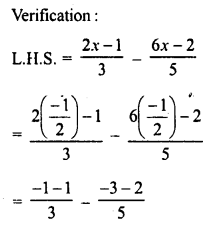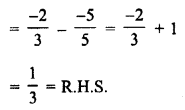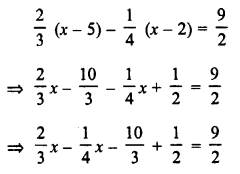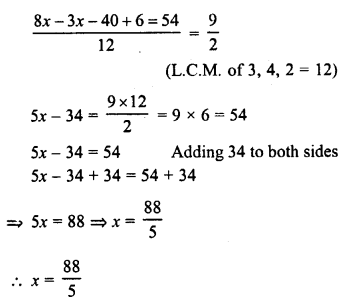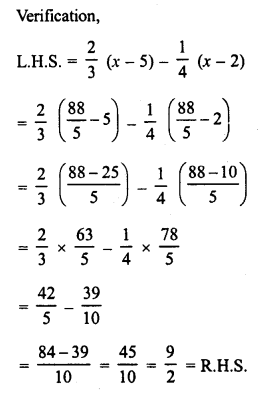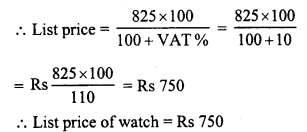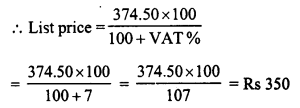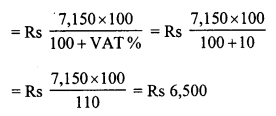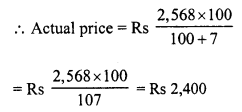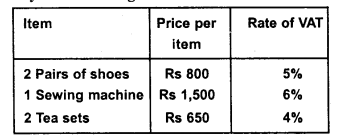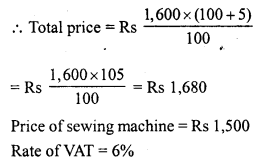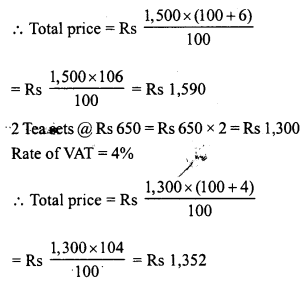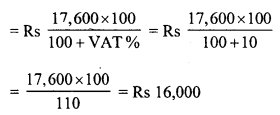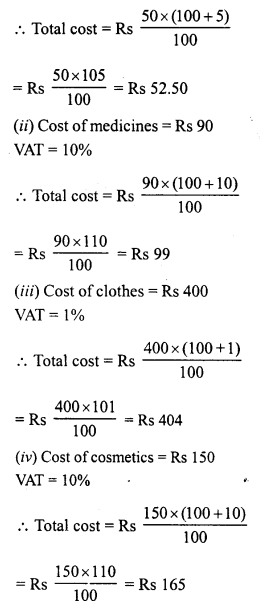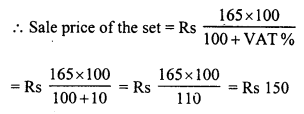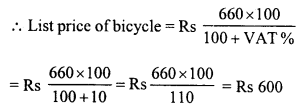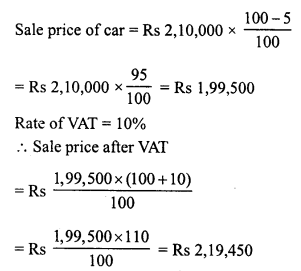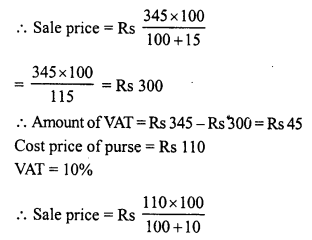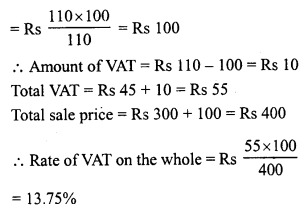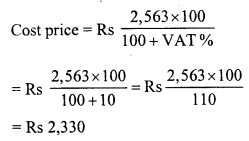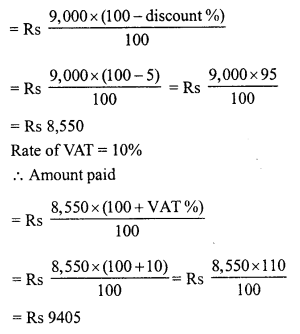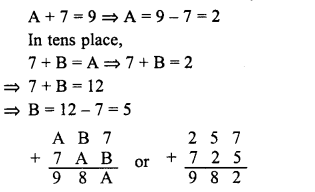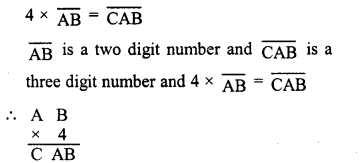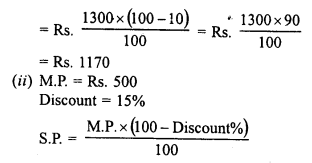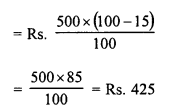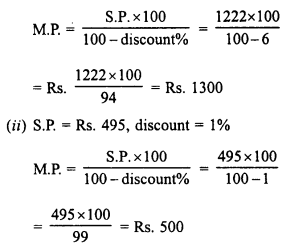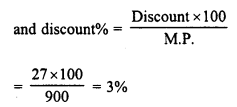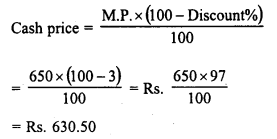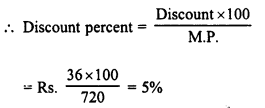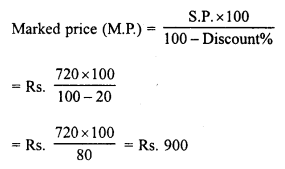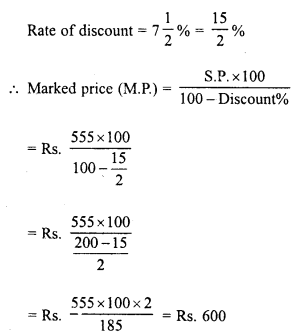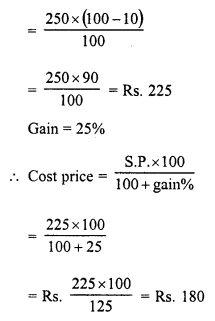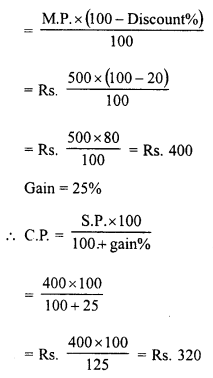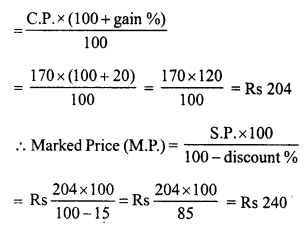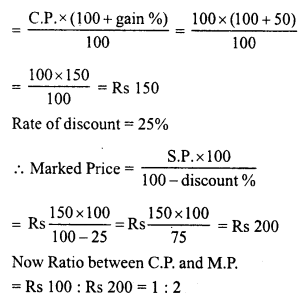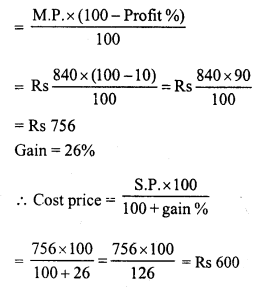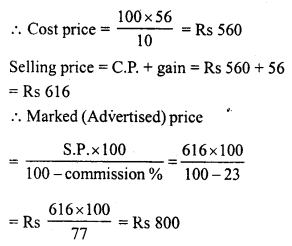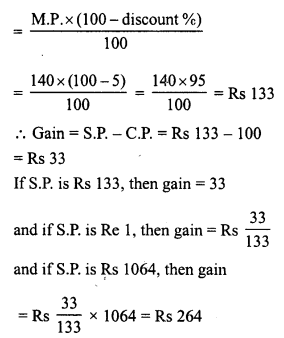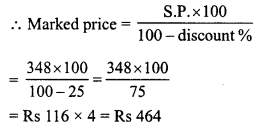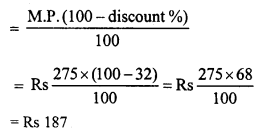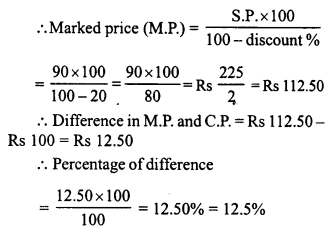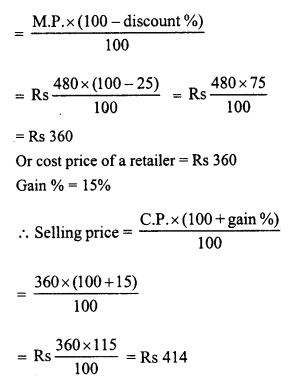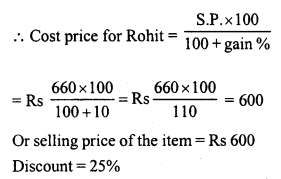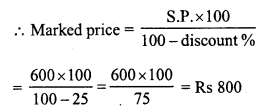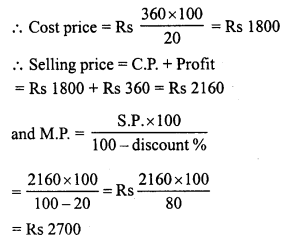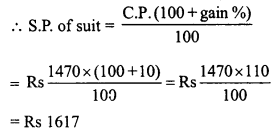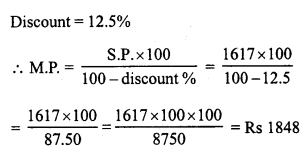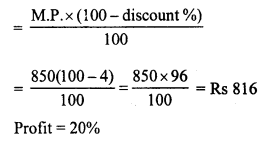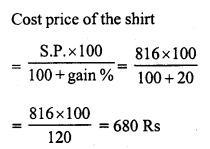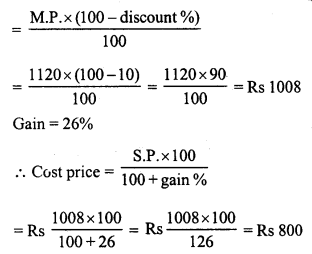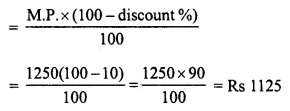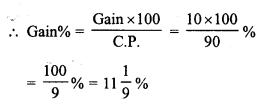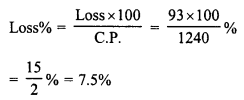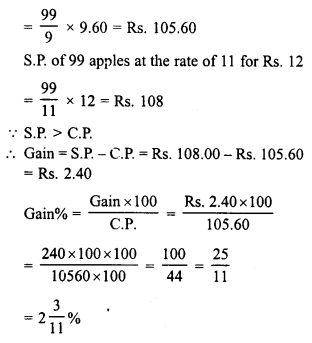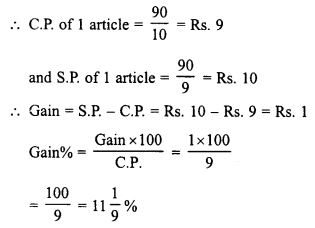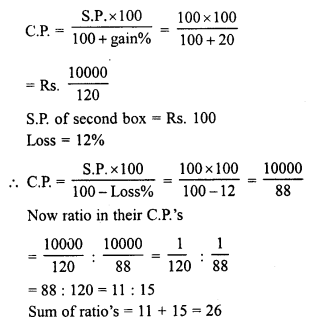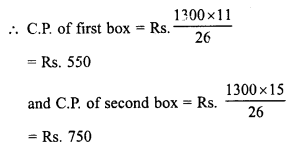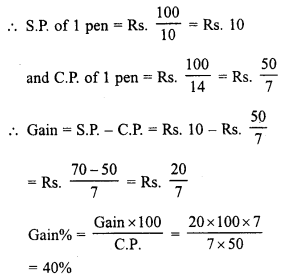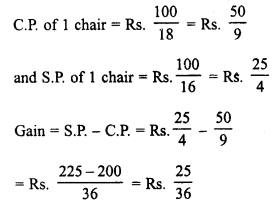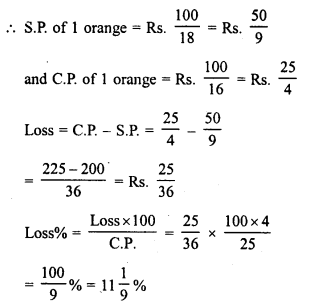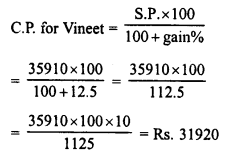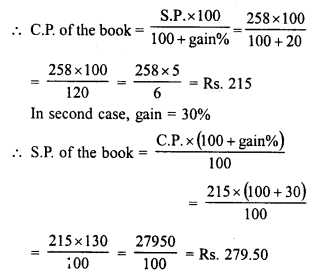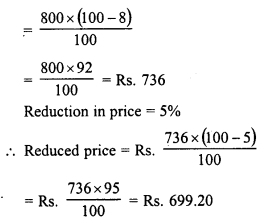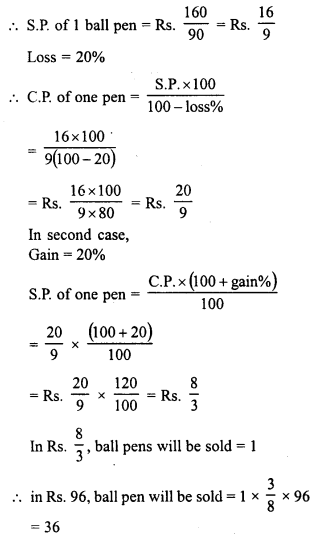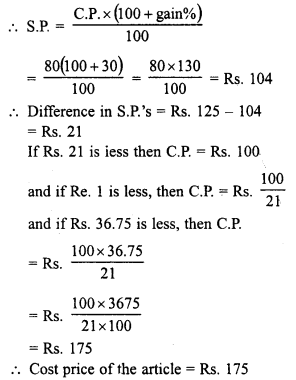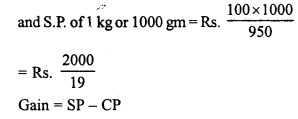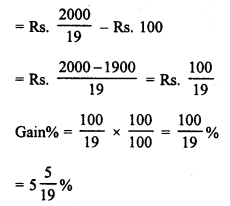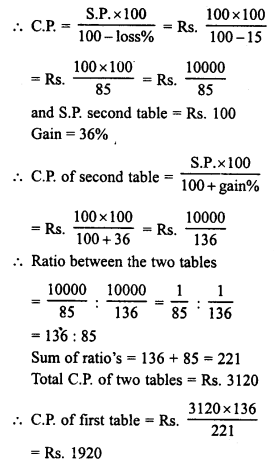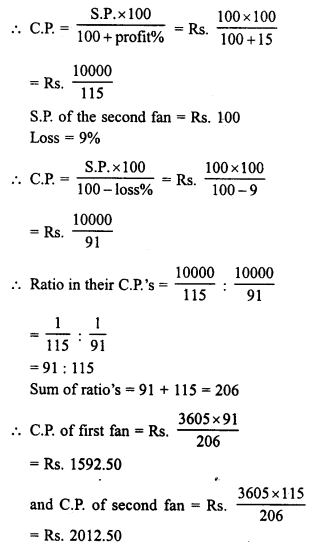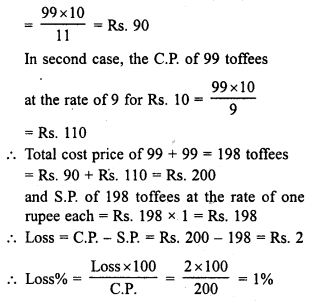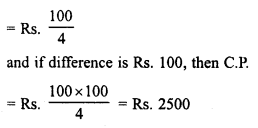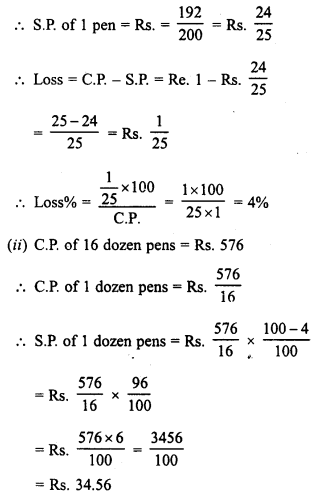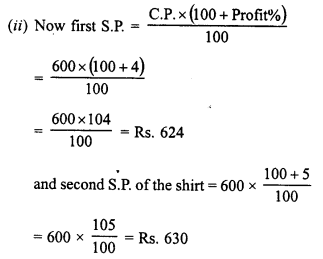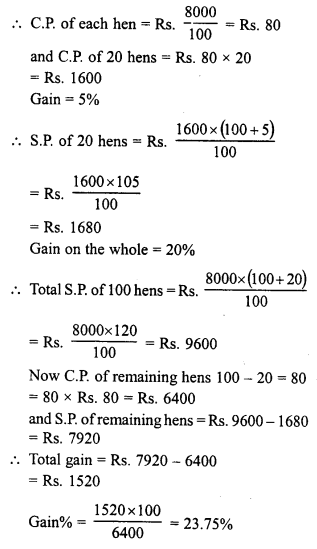RD Sharma Class 8 Solutions Chapter 6 Algebraic Expressions and Identities Ex 6.5
These Solutions are part of RD Sharma Class 8 Solutions. Here we have given RD Sharma Class 8 Solutions Chapter 6 Algebraic Expressions and Identities Ex 6.5
Other Exercises
- RD Sharma Class 8 Solutions Chapter 6 Algebraic Expressions and Identities Ex 6.1
- RD Sharma Class 8 Solutions Chapter 6 Algebraic Expressions and Identities Ex 6.2
- RD Sharma Class 8 Solutions Chapter 6 Algebraic Expressions and Identities Ex 6.3
- RD Sharma Class 8 Solutions Chapter 6 Algebraic Expressions and Identities Ex 6.4
- RD Sharma Class 8 Solutions Chapter 6 Algebraic Expressions and Identities Ex 6.5
- RD Sharma Class 8 Solutions Chapter 6 Algebraic Expressions and Identities Ex 6.6
- RD Sharma Class 8 Solutions Chapter 6 Algebraic Expressions and Identities Ex 6.7
Multiply:
Question 1.
(5x + 3) by (7x + 2)
Solution:
(5x + 3) x (7x + 2)
= 5x (7x + 2) + 3 (7x + 2)
= 35x2 + 10x + 21x + 6
= 35x2 + 31x + 6
Question 2.
(2x + 8) by (x – 3)
Solution:
(2x + 8) x (x – 3)
= 2x (x – 3) + 8 (x – 3)
= 2x2 – 6x + 8x – 24
= 2x2 + 2x – 24
Question 3.
(7x +y) by (x + 5y)
Solution:
(7x + y) x (x + 5y)
= 7x (x + 5y) + y (x + 5y)
= 7x2 + 35xy + xy + 5y2
=7x2 + 36xy + 5y2
Question 4.
(a – 1) by (0.1a2 + 3)
Solution:
(a – 1) x (0.1a2 + 3)
= a (0.1a2 + 3) – 1 (0.1a2+ 3)
= 0.1a3 + 3a-0.1a2-3
= 0.1a3 – 0.1a2 + 3a-3
Question 5.
(3x2 +y2) by (2x2 + 3y2)
Solution:
(3x2+y2) x (2x2 + 3y2)
= 3x2 (2x2 + 3y2) + y2(2x2 + 3y2)
= 6x2 +2 + 9x2y2 + 2x2y2 + 3y2 + 2
= 6x4 + 11 x2y2 + 3y4
Question 6.

Solution:
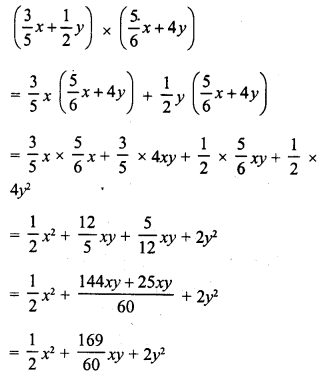
Question 7.
(x6-y6) by (x2+y2)
Solution:
(x6 – y6) x (x2 + y2)
= x6 (x2 + y2) – y6 (x2 + y2)
= x6 x x2 + x6y2 – x2y6 -y6 x y2
= x6 + 2 + x6y2 – x2y6 – y6 +2
= x + x6y2 – x2y6 – y8
Question 8.
(x2 + y2) by (3a+2b)
Solution:
(x2 + y2) x (3a + 2b)
= x2 (3a + 2b) + y2 (3a + 2b)
= 3x2a + 2x2b + 3y2a + 2y2b
3ax2 + 3av2 + 2bx2 + 2by2
Question 9.
[-3d + (-7ƒ)] by (5d +ƒ)
Solution:
[-3d + (-7ƒ)] x (5d +ƒ)
= -3d x (5d +ƒ) + (-7ƒ) x (5d +ƒ)
= -15d2-3dƒ- 35dƒ- 7ƒ2
= -15d2 – 38dƒ- 7ƒ2
Question 10.
(0.8a – 0.5b) by (1.5a -3b)
Solution:
(0.8a – 0.5b) x (1.5a-3b)
= 0.8a x (1.5a – 36) – 0.56 (1.5a -3b)
= 1.2a2 – 2.4ab – 0.75ab + 1.5b2
= 1.2a2-3.15ab+ 1.5b2
Question 11.
(2x2 y2 – 5xy2) by (x2 -y2)
Solution:
(2x2 y2 – 5xy2) x (x2 -y2)
= 2x2y2 (x2 – y2) – 5x_y2 (x2 – y2)
= 2x2y2 x x2 – 2x2y2 xy2– 5xy2 x x2 + 5x2 xy2
= 2x2 + 2 y2– 2x2 x y2 + 2– 5x1+2 y2+5xy2 + 2
= 2x4y2– 2x2y4 – 5x3y2+ 5xy4
Question 12.

Solution:
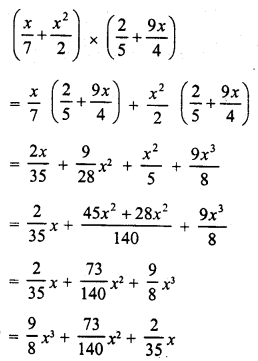
Question 13.

Solution:

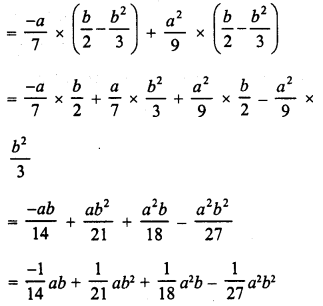
Question 14.

Solution:

Question 15.
(2x2-1) by (4x3 + 5x2)
Solution:
(2x2-1)x(4x3 + 5x2)
= 2x2 x (4x3 + 5x2) – 1 (4x3 + 5x2)
= 2x2 x 4x3 + 2x2 x 5x2 – 4x3 – 5x2
= 8x2 + 3 + 10x2 + 2-4x3-5x2
= 8x5 + 10x4 – 4x3 – 5x2
Question 16.
(2xy + 3y2) (3y2 – 2)
Solution:
(2xy + 3y2) (3y2 – 2)
= 2xy x (3y2-2) + 3y2 x (3y2-2)
= 2xy x Zy2+ 2xy x (-2) + Zy2 x Zy2 – Zy2 x 2
= 6xy1 + 2– 4xy + 9y2 + 2– 6y2
= 6xy3 – 4xy + 9y4– 6y2
Find the following products and verify the result for x = -1, y = -2 :
Question 17.
(3x-5y)(x+y)
Solution:
(3x-5y)(x+y)
= 3x x (x + y) – 5y x (x + y)
= 3x x x + 3x x y-5y x x-5y x y
= 3x2 + 3xy – 5xy – 5y2
= 3x2 – 2xy – 5y2
Verfification:
x = -1,y = -2
L.H.S. = (3x-5y)(x+y)
= [3 (-1) -5 (-2)] [-1 – 2]
= (-3 + 10) (-3) = 7 x (-3) = -21
R.H.S. = 3x2 – 2xy – 5y2
= 3 (-1)2 – 2 (-1) (-2) -5 (-2)2
=3×1-4-5×4=3-4-20
= 3-24 = -21
∴ L.H.S. = R.H.S.
Question 18.
(x2y-1) (3-2x2y)
Solution:
(x2y-1) (3-2x2y)
= x2y (3 – 2x2y) -1(3-2x2y)
= x2y x 3 – x2y x 2x2y – 1 x 3 + 1 x 2x2y
= 3x2y-2x2 + 2x y1 +1-3 + 2x2y
= 3x2y – 2x4y2– 3 + 2x2y
= 3x2y + 2x2y – 2x4y2 – 3
= 5x2y – 2x4y2 – 3
Verification : (x = -1, y = -2)
L.H.S. = (x2y – 1) (3 – 2x2y)
= [(-1)2 x (-2) -1] [3 – 2 x (-1)2 x (-2)]
= [1 x (-2) -1) [3 – 2 x 1 x (-2)]
= (-2 – 1) (3 + 4) = -3 x 7 = -21
R.H.S. = 5x2y – 2x4y2 – 3
= 5 (-1)2 (-2) -2 (-1)4 (-2)2 -3
5 x 1 (-2) – 2 (1 x 4) -3
= -10-8-3 = -21
∴ L.H.S. = R.H.S
Question 19.

Solution:
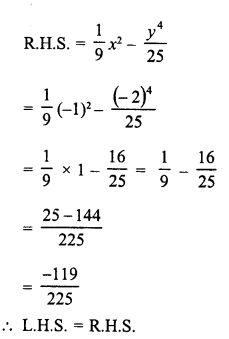
Simplify :
Question 20.
x2 (x + 2y) (x – 3y)
Solution:
x2 (x + 2y) (x – 3y)
= x2 [x (x – 3y) + 2y (x – 3y)]
= x2 [x2 – 3xy + 2xy – 6y2]
= x2 [x2 – xy – 6y2)
= x2 x x2 – x2 x xy – x26y2
= x4 – x3y – 6x2y2
Question 21.
(x2 – 2y2) (x + 4y)
Solution:
(x2 – 2y2) (x + 4y) x2y2
= [x2 (x + 4y) -2y2 (x + 4y)] x2y2
= (x3 + 4x2y – 2xy2 – 8y3) x2y2
= x2y2 x x3 + x2y2 x 4x2y – 2x2y2 x xy2 – 8x2y2 x y3
= x2 +3 y2 + 4x2 + 2 y2 +1 – 2x2 +1 y2+ 2 – 8x2y2+3
= xy + 44xy3 – 2x3y4 – 8x2y5
Question 22.
a2b2 (a + 2b) (3a + b)
Solution:
a2b2 (a + 2b) (3a + b)
= a2b2 [a (3a + b).+ 2b (3a + b)]
= a2b2 [3a2 + ab + 6ab + 2b2]
= a2b2 [3a2 + lab + 2b2]
= a2b2 x 3a2 + a2b2 x 7ab + a2b2 x 2b2
= 3a2 + 2b2 + 7a2+1 b2+1+ 2a2b2 + 2
= 3a4b2 + 7a3b3 + 2a2b4
Question 23.
x2 (x-y) y2 (x + 2y)
Solution:
x2 (x -y) y2 (x + 2y)
= [x2 x x – x2 x y] [y2 x x + y2 x 2y]
= (x3 – x2y) (xy2 + 2y3)
= x3 (xy2 + 2y3) – x2y (xy2 + 2y3)
= x3 x xy2 + x3 x 2y3 – x2y x xy2 – x2y x 2y3
= x3 +1 y2 + 2x3y3 – x2 +1 y1+ 2 – 2x2y1 + 3
= x4y2 + 2x3y3 – x3y3 – 2x2y4
= x4y2 + x3y3 – 2x2y4
Question 24.
(x3 – 2x2 + 5x-7) (2x-3)
Solution:
(x3 – 2x2 + 5x – 7) (2x – 3)
= (2x – 3) (x3 – 2x2 + 5x – 7)
= 2x (x3 – 2x2 + 5x – 7) -3 (x3 – 2x2 + 5x – 7)
= 2x x x3 – 2x x 2x2 + 2x x 5x – 2x x 7 -3 x x3 – 3 x (-2x2) – 3 x 5x – 3 x (-7)
= 2x4-4x3 + 10x2– 14x-3x3 + 6x2– 15x + 21
= 2x4 – 4x3 – 3x3 + 10x2 + 6x2– 14x- 15x + 21
= 2x4-7x3 + 16x2-29x+ 21
Question 25.
(5x + 3) (x – 1) (3x – 2)
Solution:
(5x + 3) (x – 1) (3x – 2)
= (5x + 3) [x (3x – 2) -1 (3x – 2)]
= (5x + 3) [3x2 – 2x – 3x + 2]
= (5x + 3) [3x2 – 5x + 2]
= 5x (3x2 – 5x + 2) + 3 (3x2 – 5x + 2)
= (5x x 3x2 – 5x x Sx + 5x x 2)+ [3 x 3x2 + 3 x (-5x) + 3×2]
= 15x3 – 25x2 + 10x + 9x2 – 15x + 6
= 15x3 – 25x2 + 9x2 + 10x – 15x + 6
= 15x3 – 16x2 – 5x + 6
Question 26.
(5-x) (6-5x) (2-x)
Solution:
(5-x) (6-5x) (2-x)
= [5 (6 – 5x) -x (6 – 5x)] (2 – x)
= [30 – 2$x – 6x + 5x2] (2 – x)
= (30 – 3 1x + 5x2) (2-x)
= 2 (30 – 31x + 5x2) – x (30 – 31x + 5x2)
= 60 – 62x + 10x2 – 30x + 3 1x2 – 5x3
= 60 – 62x – 30x + 10x2 + 3 1x2 – 5x3
= 60 – 92x + 41x2 – 5x3
Question 27.
(2x2 + 3x – 5) (3x2 – 5x + 4)
Solution:
(2x2 + 3x – 5) (3x2 – 5x + 4)
= 2x2 (3x2 – 5x + 4) + 3x (3x2 – 5x + 4) -5 (3x2 – 5x + 4)
= 2x2 x 3x2 – 2x2 x 5x + 2x2 x 4 + 3x x 3x2 – 3x x 5x + 3x x 4 – 5 x 3x2 – 5 (-5x) -5×4
= 6x4 – 10x3 + 8x2 + 9x3 – 15x2 + 12x – 15x2 + 25x-20
= 6x4 – 10x3 + 9x3 + 8x2 – 15x2 – 15x2 + 12x + 25x – 20
= 6x4 – x3 – 22x2 + 37x – 20
Question 28.
(3x – 2) (2x – 3) + (5x – 3) (x + 1)
Solution:
(3x – 2) (2x – 3) + (5x – 3) (x + 1)
= 3x (2x – 3) -2 (2x – 3) + 5x (x + 1) – 3 (x + 1)
= 6x2 – 9x – 4x + 6 + 5x2 + 5x – 3x – 3
= 6x2 + 5x2 – 9x – 4x + 5x – 3x + 6 – 3
= 11x2– 11x + 3
Question 29.
(5x – 3) (x + 2) – (2x + 5) (4x – 3)
Solution:
(5x – 3) (x + 2) – (2x + 5) (4x – 3)
= [5x (x + 2) -3 (x + 2)] – [2x (4x – 3) + 5 (4x – 3)]
= [5x2 + 1 0x – 3x – 6] – [8x2 – 6x + 20x -15]
= (5x2 + 7x – 6) – (8x2 + 14x – 15)
= 5x2 + lx – 6 – 8x2 – 14x + 15
= 5x2 – 8x2 + 7x – 14x – 6 + 15
= -3x2 – 7x + 9
Question 30.
(3x + 2y) (4x + 3y) – (2x – y) (7x – 3y)
Solution:
(3x + 2y) (4x + 3y) – (2x – y) (7x – 3y)
= [3x (4x + 3y) + 2y (4x + 3y)]-[2x (7x-3y)-y(7x-3y)]
= (12x2 + 9xy + 8xy + 6y2) – (14x2 – 6xy – 7xy + 3y2)
= (12x2 + 17xy + 6y2) – (14x2 – 13xy + 3y2)
= 12x2 + 17xy + 6y2 – 14x2 + 13xy – 3y2
= 12x2 – 14x2 + 17xy + 13xy + 6y2 – 3y2
= -2x2 + 30xy + 3y2
= -2x2 + 3y2 + 30xy
Question 31.
(x2-3x + 2) (5x- 2) – (3x2 + 4x-5) (2x- 1)
Solution:
(x2-3x + 2) (5x- 2) – (3x2 + 4x-5) (2x- 1)
= [5x (x2 – 3x + 2) -2 (x2 – 3x + 2)] – [2x (3x2 + 4x – 5) -1 (3x2 + 4x – 5)]
= [5x3 – 15x2 + 10x – 2x2 + 6x – 4] – [6x3 + 8x2 – 10x – 3x2 – 4x + 5]
= [5x3 – 15x2 – 2x2 + 10xc + 6x – 4] – [6x3 + 8x2 – 3x2 – 10x – 4x + 5]
= (5x3 – 17x2 + 16x-4) – (6x3 + 5x2 – 14x + 5)
= 5x3 – 17x2 + 16x – 4 – 6x3 – 5x2 + 14x – 5
= 5x3 – 6x3 – 17x2 – 5x2 + 16x + 14x – 4 – 5
= -x3 – 22x2 + 30x – 9
Question 32.
x3 – 2x2 + 3x – 4) (x – 1) – (2x – 3) (x2 – x + 1)
Solution:
(x3 – 2x2 + 3x – 4) (x – 1) – (2x – 3) (x2 – x + 1)
= [x (x3 – 2x2 + 3x – 4) – 1 (x3 – 2x2 + 3x – 4)] – [2x (x2 – x + 1) – 3 (x2 – x + 1)]
= [x4 – 2x3 + 3x2 – 4x – x3 + 2x2 – 3x + 4] [2x3 – 2x2 + 2x – 3x2 + 3x – 3]
= (x4 – 2x3 – x3 + 3x2 + 2x2 – 4x – 3x + 4) (2x3 – 2x2 – 3x2 + 2x + 3x – 3)
= (x4 – 3x3 + 5x2 – 7x + 4) – (2x3 – 5x2 + 5x – 3)
= x4 – 3x3 + 5x2 – 7x + 4 – 2x3 + 5x2 – 5x + 3
= x4 – 3x3 – 2x3 + 5x2 + 5x2 – 7x – 5x + 4 + 3
= x4 – 5x3 + 10x2 – 12x + 7
Hope given RD Sharma Class 8 Solutions Chapter 6 Algebraic Expressions and Identities Ex 6.5 are helpful to complete your math homework.
If you have any doubts, please comment below. Learn Insta try to provide online math tutoring for you.
